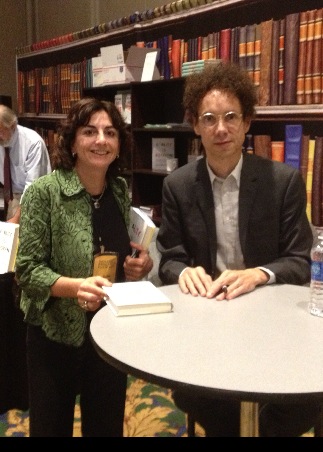Yesterday, I shared 6 of the questions that stood out from last week's TMRE conference. Here are 4 more that had me thinking:
 4. Are you developing for mobile first (yet)? 6 out of 10 people LOVE their mobile device (for real!) says Tony Marlow at Yahoo! In fact, he says that 3 out of 5 would rather give up chocolate for a year than give up their tablet and 1 in 4 women would give up sex before they’d surrender their tablet—yikes! With the insane growth in internet usage, thanks to portable devices (smartphones and tablets), why are so many companies putting mobile development on the back burner? Yahoo’s development teams are developing for mobile first, is it time for you to do the same?
4. Are you developing for mobile first (yet)? 6 out of 10 people LOVE their mobile device (for real!) says Tony Marlow at Yahoo! In fact, he says that 3 out of 5 would rather give up chocolate for a year than give up their tablet and 1 in 4 women would give up sex before they’d surrender their tablet—yikes! With the insane growth in internet usage, thanks to portable devices (smartphones and tablets), why are so many companies putting mobile development on the back burner? Yahoo’s development teams are developing for mobile first, is it time for you to do the same?
3. Does your company understand how consumers actually use your products? I’d just got done hearing why my clients need to put mobile first, when CMB’s very own Chris Neal and the Council for Research Excellence’s Joanne Burns revealed that by volume, mobile TV viewing isn’t quite so big……yet. 89% of total TV viewing is still done on a TV set, while 7% is watched on a mobile device. Interestingly, quite a bit of this mobile viewing is done in the home—sometimes it’s more convenient to stay right where you are than go to the TV room, and make no mistake convenience matters a lot. So, a lot of mobile TV viewers aren’t mobile when they’re watching. Is your company paying attention to shifts in the way people are actually consuming or being exposed to your product?  2. Is the “hero” generation engaged with your brand? Jake Katz of YPulse shed a little more light on the Millennials (born between 1982-2004) in our midst. This is a generation that’s come of age during the instability of 9/11, Hurricane Katrina, the financial crisis and a difficult job market. He calls this generation the “hero” archetype. Their core traits: special, sheltered, confident, conventional, pressured, achieving, and team and family oriented. Millennials seesaw between optimism and insecurity but have been raised to speak up and ask questions. That’s a tough nut to crack for many marketers, is it worth it for your brand?
2. Is the “hero” generation engaged with your brand? Jake Katz of YPulse shed a little more light on the Millennials (born between 1982-2004) in our midst. This is a generation that’s come of age during the instability of 9/11, Hurricane Katrina, the financial crisis and a difficult job market. He calls this generation the “hero” archetype. Their core traits: special, sheltered, confident, conventional, pressured, achieving, and team and family oriented. Millennials seesaw between optimism and insecurity but have been raised to speak up and ask questions. That’s a tough nut to crack for many marketers, is it worth it for your brand?
1. Are you digging in the right places? One of my favorite moments was when Malcolm Gladwell spoke about his latest book David and Goliath, and the power of the inverted U (or the straightened bell curve)—at first more is better but then marginal utility diminishes and goes negative. Examples are drinking is healthy (left side of curve at 1-2 drinks a week) and drinking is unhealthy (right side of inverted U curve at 30+ drinks a week). Is your company overly focused on the left or right side of the full picture?
Julie is an Account Executive at CMB, she's very excited about all the new books she has to read, and of course her signed copy of David and Goliath. You can follow her on Twitter @Julie1research.

